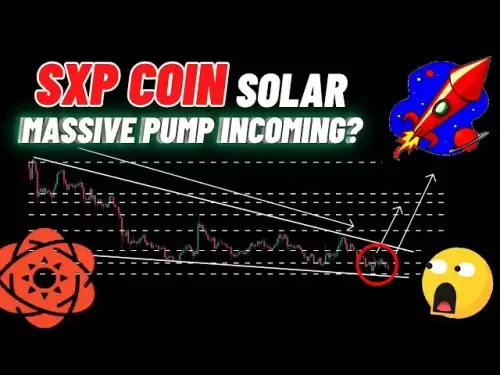-
 Bitcoin
Bitcoin $117400
1.93% -
 Ethereum
Ethereum $3747
3.63% -
 XRP
XRP $3.157
3.09% -
 Tether USDt
Tether USDt $1.000
0.02% -
 BNB
BNB $783.3
3.19% -
 Solana
Solana $186.6
5.64% -
 USDC
USDC $0.9999
0.01% -
 Dogecoin
Dogecoin $0.2375
5.42% -
 TRON
TRON $0.3185
1.32% -
 Cardano
Cardano $0.8191
3.28% -
 Hyperliquid
Hyperliquid $44.43
5.76% -
 Sui
Sui $3.995
9.84% -
 Stellar
Stellar $0.4396
6.27% -
 Chainlink
Chainlink $18.26
4.83% -
 Hedera
Hedera $0.2646
11.88% -
 Bitcoin Cash
Bitcoin Cash $553.5
5.55% -
 Avalanche
Avalanche $24.13
4.73% -
 Litecoin
Litecoin $113.3
1.77% -
 UNUS SED LEO
UNUS SED LEO $8.975
0.11% -
 Shiba Inu
Shiba Inu $0.00001405
5.69% -
 Toncoin
Toncoin $3.319
7.46% -
 Ethena USDe
Ethena USDe $1.001
0.02% -
 Uniswap
Uniswap $10.44
4.98% -
 Polkadot
Polkadot $4.098
4.31% -
 Monero
Monero $328.6
1.87% -
 Dai
Dai $1.000
0.01% -
 Bitget Token
Bitget Token $4.561
2.76% -
 Pepe
Pepe $0.00001261
5.29% -
 Aave
Aave $296.8
4.02% -
 Cronos
Cronos $0.1335
3.28%
How to use DMI after good news? Is the DMI signal accurate when there is sudden good news?
Use DMI after good news by monitoring +DI/-DI crossovers and ADX strength, but combine with other indicators to filter false signals in volatile markets.
May 23, 2025 at 12:01 pm
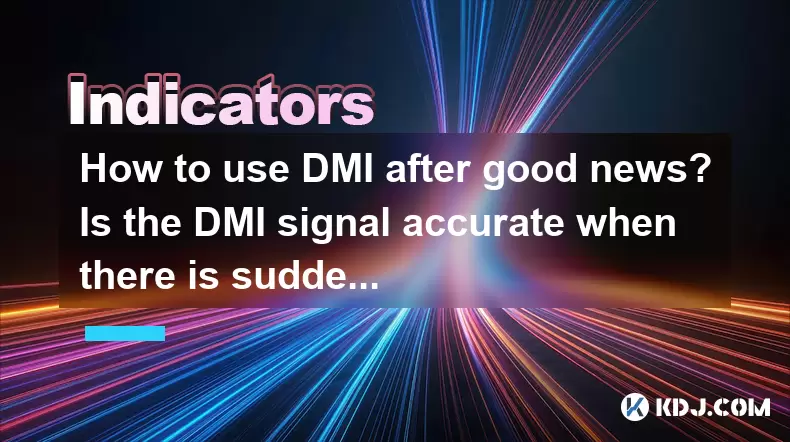
How to Use DMI After Good News? Is the DMI Signal Accurate When There Is Sudden Good News?
In the dynamic world of cryptocurrencies, traders often rely on various technical indicators to make informed decisions. One such indicator is the Directional Movement Index (DMI), which is used to determine the strength of a trend. When good news hits the market, traders wonder how to effectively use the DMI and whether its signals remain accurate in such volatile conditions. This article delves into these questions, providing a comprehensive guide on utilizing the DMI after good news and assessing its reliability during sudden market shifts.
Understanding the Directional Movement Index (DMI)
The Directional Movement Index (DMI) is a technical indicator developed by J. Welles Wilder to assess the strength of a trend. It consists of three lines: the Positive Directional Indicator (+DI), the Negative Directional Indicator (-DI), and the Average Directional Index (ADX). The +DI and -DI lines help traders identify the direction of the trend, while the ADX line measures the strength of the trend.
- +DI: This line measures the upward movement in the price.
- -DI: This line measures the downward movement in the price.
- ADX: This line quantifies the strength of the trend, with readings above 25 indicating a strong trend and readings below 20 suggesting a weak or non-existent trend.
Understanding these components is crucial for effectively using the DMI in any market condition, including after good news.
Impact of Good News on Cryptocurrency Markets
When good news hits the cryptocurrency market, it often leads to a surge in buying activity, causing prices to rise rapidly. This sudden increase in demand can create volatile conditions, making it challenging for traders to navigate the market using technical indicators like the DMI.
Good news can come in various forms, such as regulatory approval, technological advancements, or partnerships with major companies. Each type of news can have a different impact on the market, but the common thread is the potential for increased volatility and price movements.
Using DMI After Good News: A Step-by-Step Guide
After good news, traders need to adapt their strategies to account for the increased volatility. Here's a detailed guide on how to use the DMI effectively in such conditions:
Monitor the +DI and -DI Lines: After good news, watch for a crossover between the +DI and -DI lines. A bullish crossover occurs when the +DI line crosses above the -DI line, signaling a potential upward trend. Conversely, a bearish crossover happens when the -DI line crosses above the +DI line, indicating a potential downward trend.
Check the ADX Line: The ADX line is crucial for confirming the strength of the trend. After good news, if the ADX line rises above 25, it suggests that the trend is gaining strength, which can help traders make more confident decisions.
Combine with Other Indicators: Given the increased volatility after good news, it's advisable to use the DMI in conjunction with other technical indicators, such as the Relative Strength Index (RSI) or Moving Averages, to confirm signals and reduce the risk of false positives.
Set Stop-Loss Orders: Due to the potential for rapid price movements after good news, setting stop-loss orders can help manage risk. Place stop-loss orders at strategic levels based on the DMI signals and other market factors.
Monitor Market Sentiment: While the DMI provides valuable insights into trend direction and strength, it's essential to consider overall market sentiment. After good news, sentiment can shift quickly, so staying informed about market news and social media trends can complement the DMI analysis.
Accuracy of DMI Signals After Sudden Good News
The accuracy of DMI signals after sudden good news can be affected by the increased volatility and rapid price movements. While the DMI is designed to help traders identify trends, it may not always keep up with the swift changes that occur in such conditions.
False Signals: Sudden good news can lead to false signals, where the DMI indicates a trend that doesn't materialize or reverses quickly. Traders should be cautious of relying solely on the DMI during these times and consider using additional confirmation tools.
Lag in Signals: The DMI, like many technical indicators, can lag behind the actual market movements. After good news, the market can move so quickly that the DMI might not capture the initial trend, leading to delayed signals.
Combining with Other Tools: To enhance the accuracy of DMI signals after good news, traders can combine it with other technical indicators and fundamental analysis. This multi-faceted approach can provide a more comprehensive view of the market and help filter out false signals.
Historical Data Analysis: Analyzing historical data can offer insights into how the DMI has performed after similar instances of good news. By studying past market reactions, traders can better understand the potential accuracy of DMI signals in similar future scenarios.
Practical Example: Using DMI After a Major Cryptocurrency Partnership Announcement
To illustrate how to use the DMI after good news, let's consider a hypothetical scenario where a major cryptocurrency announces a partnership with a leading tech company. This news leads to a significant price surge and increased market volatility.
Initial Reaction: Immediately after the announcement, the price of the cryptocurrency spikes. Traders using the DMI observe a sharp rise in the +DI line, indicating strong upward momentum.
DMI Crossover: As the market digests the news, the +DI line crosses above the -DI line, signaling a bullish trend. The ADX line also begins to rise, confirming the strength of the trend.
Confirmation with Other Indicators: To validate the DMI signal, traders check the RSI, which shows the cryptocurrency is not yet overbought. This additional confirmation helps increase confidence in the bullish trend.
Setting Stop-Loss Orders: Given the potential for rapid price movements, traders set stop-loss orders just below key support levels identified using the DMI and other technical analysis tools.
Monitoring Market Sentiment: Throughout the trading session, traders keep an eye on social media and news outlets to gauge overall market sentiment. Any shifts in sentiment could impact the accuracy of the DMI signals.
Best Practices for Using DMI in Volatile Conditions
When using the DMI after good news, traders should follow these best practices to maximize their chances of success:
Stay Flexible: Be prepared to adjust your strategy quickly in response to changing market conditions. The DMI can help identify trends, but it's essential to remain adaptable.
Use Multiple Timeframes: Analyzing the DMI across different timeframes can provide a more comprehensive view of the market. Short-term timeframes can help identify immediate trends, while longer-term timeframes can confirm the sustainability of those trends.
Risk Management: Always prioritize risk management, especially in volatile conditions. Use the DMI to set appropriate stop-loss orders and manage your position sizes carefully.
Continuous Learning: The cryptocurrency market is constantly evolving, and so should your trading strategies. Continuously learn and refine your use of the DMI to stay ahead of the curve.
Frequently Asked Questions
Q1: Can the DMI be used for all types of cryptocurrencies, or is it more effective for certain types?
The DMI can be used for all types of cryptocurrencies, as it is a versatile technical indicator that measures trend strength and direction. However, its effectiveness may vary depending on the liquidity and volatility of the specific cryptocurrency. For highly liquid and widely traded cryptocurrencies like Bitcoin and Ethereum, the DMI signals tend to be more reliable due to the larger volume of data available. For less liquid or more volatile altcoins, traders may need to combine the DMI with other indicators to account for the increased risk of false signals.
Q2: How often should the DMI be recalculated after good news to ensure accurate signals?
The frequency of recalculating the DMI depends on the timeframe you are trading on. For short-term traders, recalculating the DMI every few minutes or hours can help capture rapid market movements after good news. For longer-term traders, daily or weekly recalculations may be sufficient. It's important to strike a balance between staying updated and avoiding over-reliance on short-term fluctuations, which can lead to false signals.
Q3: Are there any specific DMI settings that work better after good news?
While the default settings for the DMI (typically a 14-period setting) are generally effective, traders can experiment with different settings to suit their trading style and the specific market conditions after good news. Some traders might find that using a shorter period, such as 10 or 12, helps capture quicker trends, while others might prefer a longer period, such as 20, to filter out short-term noise. It's crucial to test different settings on historical data to determine which works best for your strategy.
Q4: How can traders differentiate between a genuine trend and a short-lived spike caused by good news using the DMI?
Differentiating between a genuine trend and a short-lived spike can be challenging but is essential for effective trading. Traders can use the DMI in conjunction with other indicators like the Moving Average Convergence Divergence (MACD) or Bollinger Bands to confirm trends. Additionally, observing the ADX line is crucial; if the ADX remains high and stable after the initial spike, it suggests a more sustained trend. Conversely, if the ADX quickly drops back below 25, it may indicate a short-lived spike rather than a genuine trend.
Disclaimer:info@kdj.com
The information provided is not trading advice. kdj.com does not assume any responsibility for any investments made based on the information provided in this article. Cryptocurrencies are highly volatile and it is highly recommended that you invest with caution after thorough research!
If you believe that the content used on this website infringes your copyright, please contact us immediately (info@kdj.com) and we will delete it promptly.
- Wall Street's Bitcoin Bonanza: ETF Filings Signal Crypto's Coming-Out Party
- 2025-07-26 15:10:12
- Bitcoin, Cynthia Lummis, and Freedom Money: A New York Perspective
- 2025-07-26 15:10:12
- Bitcoin, Altcoin Season, and Market Shift: What's the Deal?
- 2025-07-26 14:30:12
- PEPE, Altcoins, and Bitcoin: Navigating the Meme Coin Mania in 2025
- 2025-07-26 14:30:12
- UAE's Digital Asset Revolution: Stablecoin Regulations Take Center Stage
- 2025-07-26 10:40:11
- Whale Transactions and ENA Token: Decoding the Withdrawal Dynamics
- 2025-07-26 14:50:12
Related knowledge
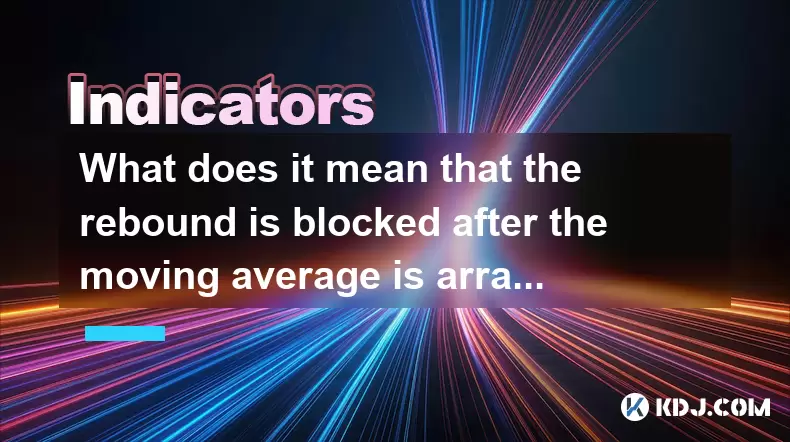
What does it mean that the rebound is blocked after the moving average is arranged in a short position for the first time?
Jul 26,2025 at 10:51am
Understanding the Short-Term Moving Average ConfigurationWhen traders refer to a 'short position arrangement' in moving averages, they are describing ...
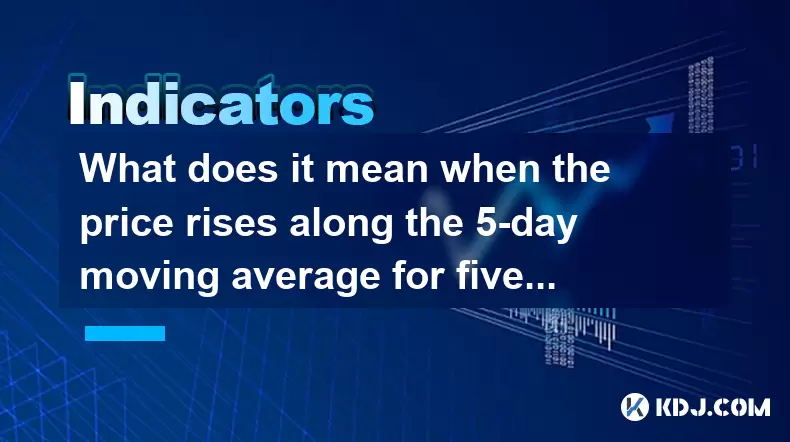
What does it mean when the price rises along the 5-day moving average for five consecutive days?
Jul 26,2025 at 08:07am
Understanding the 5-Day Moving Average in Cryptocurrency TradingThe 5-day moving average (5DMA) is a widely used technical indicator in cryptocurrency...
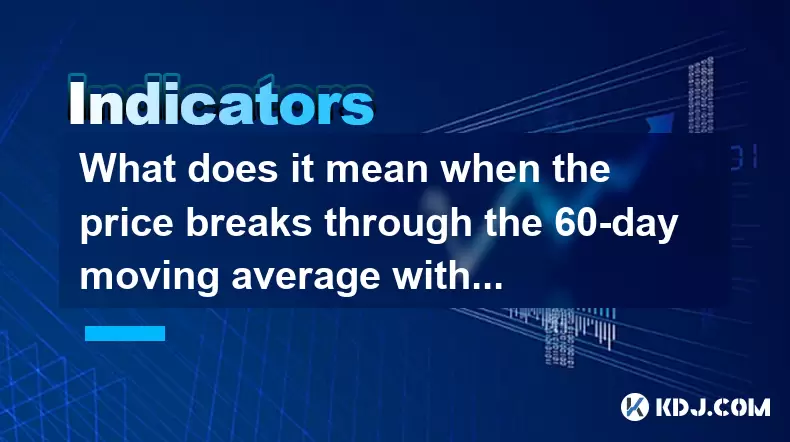
What does it mean when the price breaks through the 60-day moving average with a large volume but shrinks the next day?
Jul 26,2025 at 06:01am
Understanding the 60-Day Moving Average in Cryptocurrency TradingThe 60-day moving average (60DMA) is a widely used technical indicator in the cryptoc...
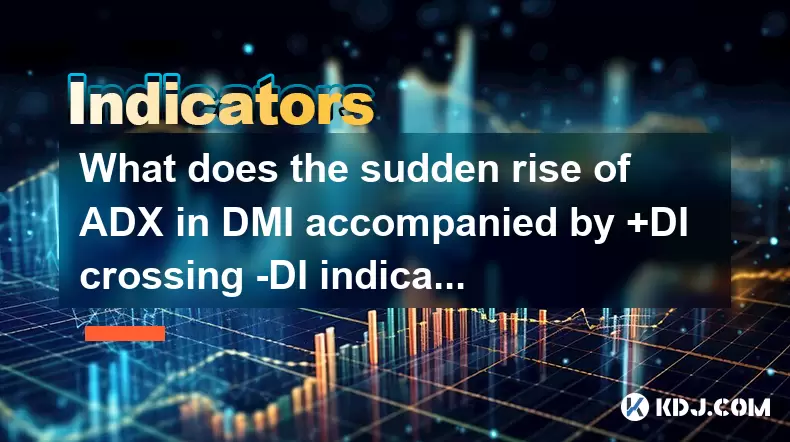
What does the sudden rise of ADX in DMI accompanied by +DI crossing -DI indicate?
Jul 26,2025 at 01:21pm
Understanding the DMI and Its Core ComponentsThe Directional Movement Index (DMI) is a technical analysis tool used to determine the presence and stre...
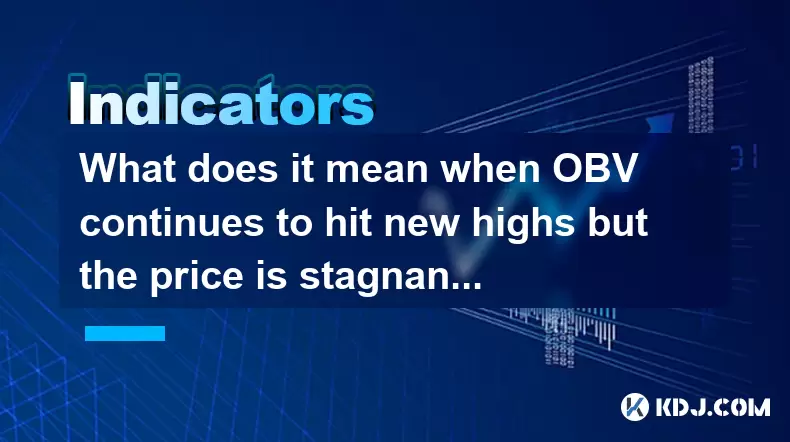
What does it mean when OBV continues to hit new highs but the price is stagnant?
Jul 26,2025 at 09:57am
Understanding the On-Balance Volume (OBV) IndicatorThe On-Balance Volume (OBV) is a technical analysis indicator that uses volume flow to predict chan...
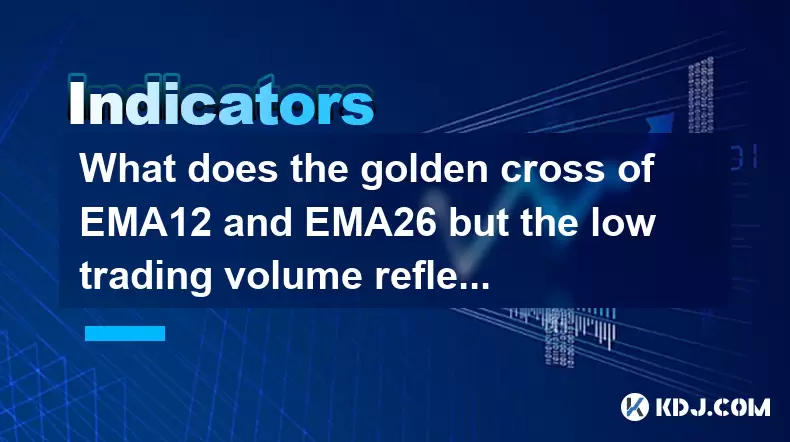
What does the golden cross of EMA12 and EMA26 but the low trading volume reflect?
Jul 26,2025 at 06:44am
Understanding the Golden Cross in EMA12 and EMA26The golden cross is a widely recognized technical indicator in the cryptocurrency market, signaling a...

What does it mean that the rebound is blocked after the moving average is arranged in a short position for the first time?
Jul 26,2025 at 10:51am
Understanding the Short-Term Moving Average ConfigurationWhen traders refer to a 'short position arrangement' in moving averages, they are describing ...

What does it mean when the price rises along the 5-day moving average for five consecutive days?
Jul 26,2025 at 08:07am
Understanding the 5-Day Moving Average in Cryptocurrency TradingThe 5-day moving average (5DMA) is a widely used technical indicator in cryptocurrency...

What does it mean when the price breaks through the 60-day moving average with a large volume but shrinks the next day?
Jul 26,2025 at 06:01am
Understanding the 60-Day Moving Average in Cryptocurrency TradingThe 60-day moving average (60DMA) is a widely used technical indicator in the cryptoc...

What does the sudden rise of ADX in DMI accompanied by +DI crossing -DI indicate?
Jul 26,2025 at 01:21pm
Understanding the DMI and Its Core ComponentsThe Directional Movement Index (DMI) is a technical analysis tool used to determine the presence and stre...

What does it mean when OBV continues to hit new highs but the price is stagnant?
Jul 26,2025 at 09:57am
Understanding the On-Balance Volume (OBV) IndicatorThe On-Balance Volume (OBV) is a technical analysis indicator that uses volume flow to predict chan...

What does the golden cross of EMA12 and EMA26 but the low trading volume reflect?
Jul 26,2025 at 06:44am
Understanding the Golden Cross in EMA12 and EMA26The golden cross is a widely recognized technical indicator in the cryptocurrency market, signaling a...
See all articles























